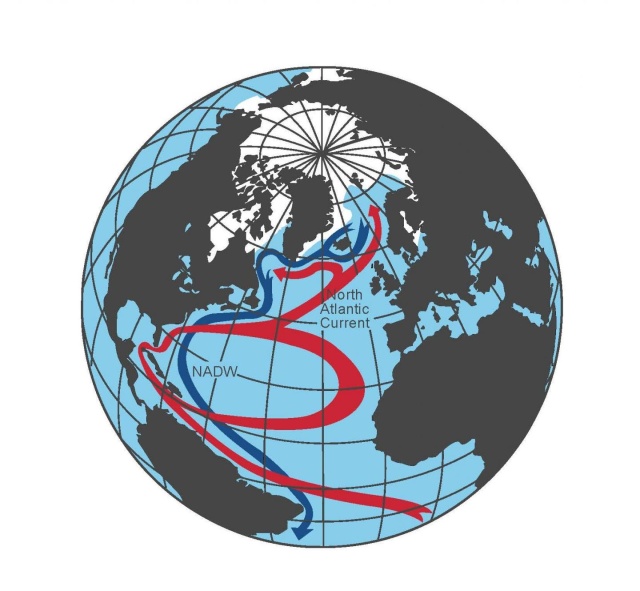Critical ocean circulation in Atlantic appears to have slowed
http://arstechnica.com/science/2015/03/critical-ocean-circulation-in-atlantic-appears-to-have-slowed/

If ocean circulation has an Achilles’ heel, it’s the North Atlantic. Here, salty surface water from the south cools, becoming dense enough to mix with the deep water below. Once in the deep, it turns to make a return journey southward. This mixing is a delicate balance—dump enough lower-salinity water at the surface, and it can become too buoyant to sink. That slows, and can even halt, the great conveyor belt of circulation that carries warm surface water around.
This conveyor belt, called the Atlantic Meridional Overturning Circulation (AMOC for those who don’t want to have to say that all the time), is unlikely to shut down any time soon. (It’s certainly not going to happen The Day After Tomorrow…) But while the last IPCC report judged a shutdown to be “very unlikely” this century, climate models consistently predict that the AMOC would slow down in the neighborhood of 12 to 52 percent by 2100, provided “business as usual” greenhouse gas emissions.
So what has the AMOC done in recent decades, given the warming we’ve already experienced? It’s hard to say. We don’t have a continuous record of this circulation, in part because it isn’t the easiest thing to measure. Studies that have tried to assess the recent past using one indicator or another have produced conflicting results, with some suggesting a slowdown and others seeing no signs of change. Real monitoring has only been in place since 2004. It shows a small decrease, but the time period is too short to know if that’s just natural variability.
Rather than waiting for future measurements, a new study led by Stefan Rahmstorf of the Potsdam Institute for Climate Impact Research tries to create a robust reconstruction of the past behavior of the AMOC. (Rahmstorf also wrote about the study for the RealClimate blog.) The work relies on the AMOC’s surface temperature footprint. If you look at warming trends around the globe for the last century, there’s a conspicuous hole in the North Atlantic that hasn’t warmed at all. It’s in just the place where climate models simulate cooling when the AMOC, with its northward transport of warmer water, slows down.
SNIP
